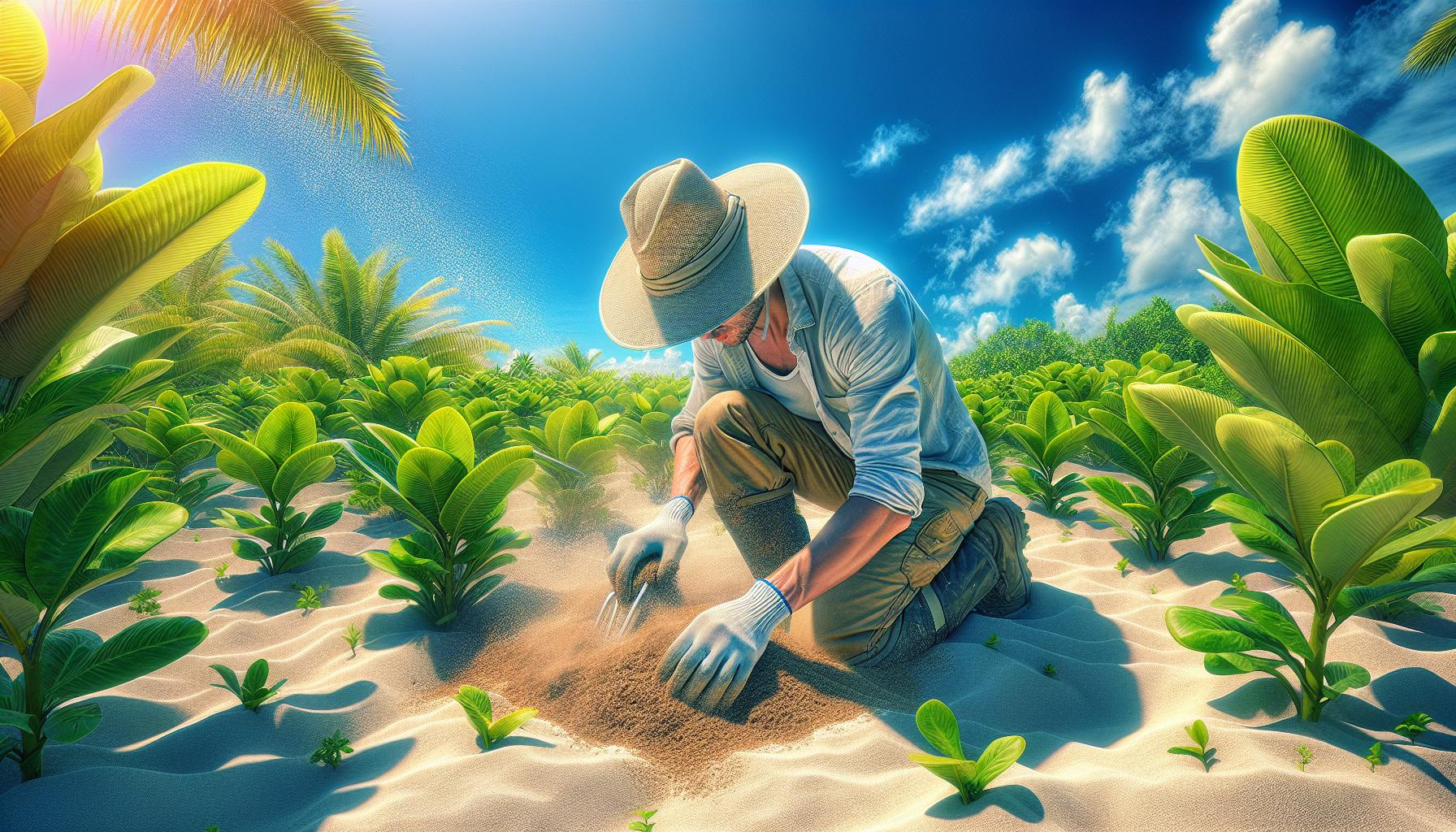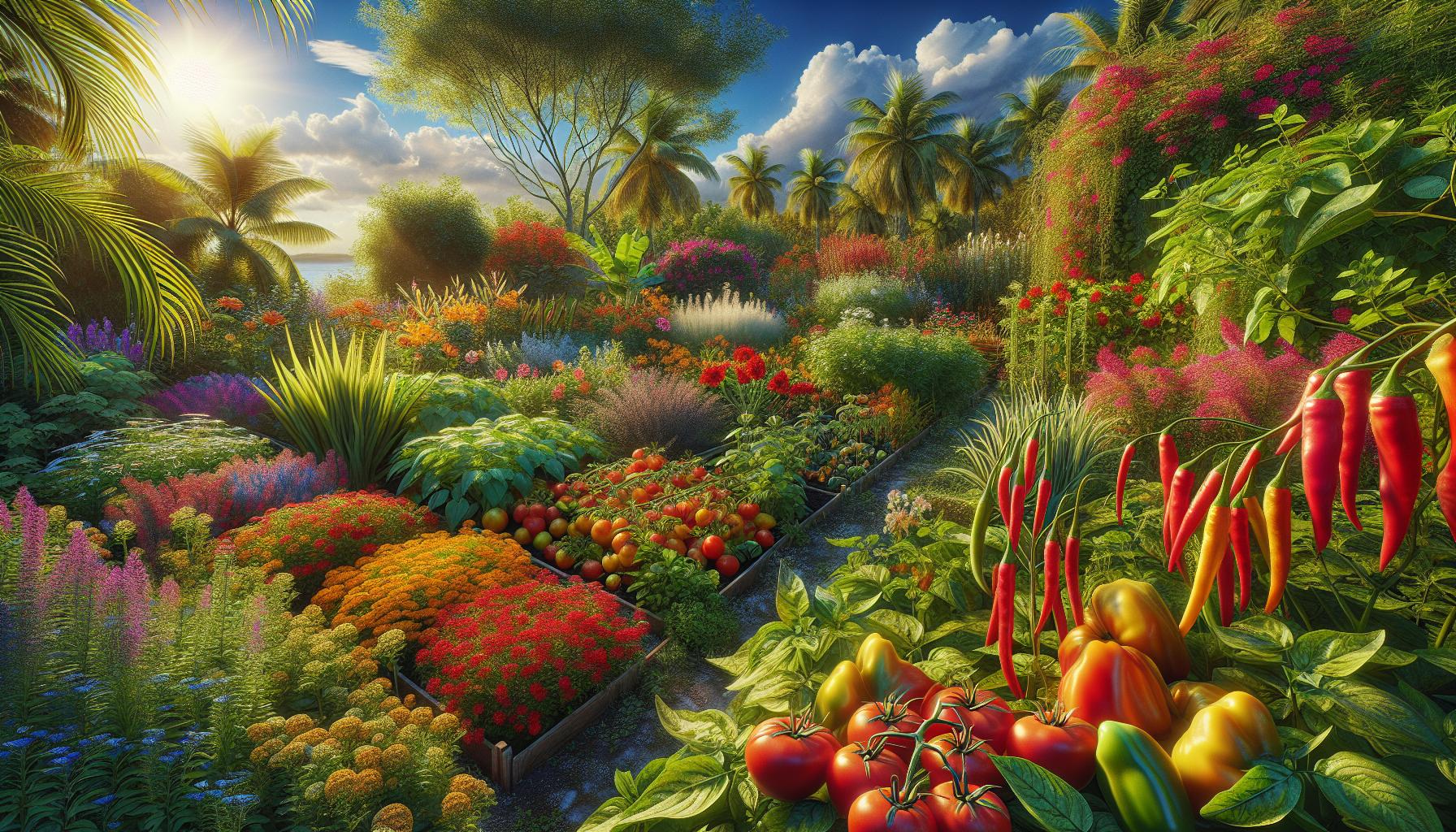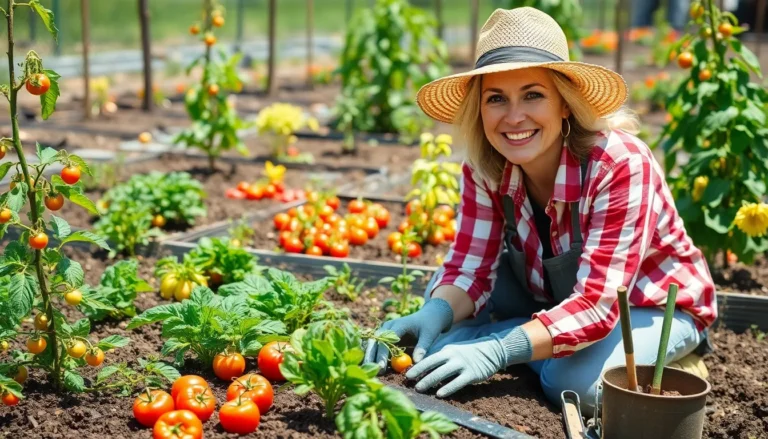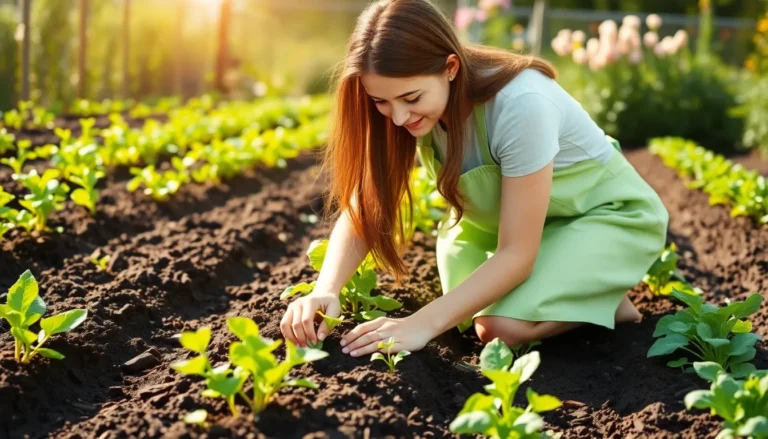Living in Florida has shaped my approach to gardening in unique ways. The Sunshine State’s subtropical climate offers endless possibilities for growing vibrant plants year-round but also presents distinct challenges that make it different from gardening anywhere else in the continental U.S.
I’ve learned through years of experience that successful Florida gardening requires understanding our specific growing zones hot summers and mild winters. Whether you’re growing citrus fruits tropical plants or resilient native species you’ll need to adapt traditional gardening advice to match our local conditions. The good news is that once you master the basics of Florida’s growing seasons and soil requirements you’ll be rewarded with a lush productive garden that flourishes across all seasons.
Key Takeaways
- Florida’s unique climate spans USDA zones 8a to 11a, allowing year-round gardening with proper planning and plant selection
- Successful Florida gardening requires adapting to high humidity and heat through strategies like morning watering, proper spacing, and using shade cloth
- Native Florida plants like Blanket Flower, Saw Palmetto, and Firebush thrive best in local conditions and require minimal maintenance
- Sandy soil challenges can be overcome by adding organic matter, using mulch, and implementing proper watering techniques
- Two distinct growing seasons (summer March-August and winter September-February) allow for diverse crop rotation and year-round harvests
- Hurricane preparation and protection are essential parts of Florida gardening, requiring specific structural measures and plant selection
Understanding Florida’s Unique Growing Climate
Florida’s climate creates distinct growing conditions influenced by its geographical location between the Gulf of Mexico and Atlantic Ocean. Here’s what I’ve learned about managing successful gardens in this unique environment.
USDA Hardiness Zones in Florida
Florida spans across USDA zones 8a to 11a, creating diverse growing opportunities throughout the state.
| Zone | Temperature Range (°F) | Florida Regions |
|---|---|---|
| 8a | 10 to 15 | North Florida Panhandle |
| 9a | 20 to 25 | North Central Florida |
| 9b | 25 to 30 | Central Florida |
| 10a | 30 to 35 | South Central Florida |
| 10b | 35 to 40 | Coastal Areas |
| 11a | 40 to 45 | South Florida Keys |
I’ve found these growing zones determine:
- Plant selection options for each region
- Optimal planting dates for vegetables
- Cold-hardy plant varieties for northern areas
- Tropical plant survival rates in southern regions
Managing High Humidity and Heat
The subtropical climate demands specific strategies I use to protect plants:
- Installing shade cloth during peak summer months
- Spacing plants 25% farther apart than standard recommendations
- Watering at soil level to reduce fungal growth
- Mulching with pine straw or bark to retain moisture
- Monitoring plants daily for signs of heat stress
- Early morning planting activities
- Afternoon plant protection from direct sun
- Strategic placement near established trees
- Regular pruning to improve air circulation
- Using heat-resistant varieties of common vegetables
Best Plants for Florida Gardens

Florida’s unique climate creates ideal growing conditions for specific plant varieties that thrive in high humidity and intense sunlight. I’ve identified the most successful plants for Florida gardens through years of hands-on experience.
Native Florida Plants
Native Florida plants create sustainable gardens adapted to local weather patterns and soil conditions. Here are proven native options:
- Blanket Flower (Gaillardia pulchella) produces vibrant red-orange blooms year-round
- Saw Palmetto (Serenoa repens) provides evergreen groundcover in sun or shade
- Coontie (Zamia pumila) offers low-maintenance ornamental foliage
- Firebush (Hamelia patens) attracts butterflies and hummingbirds
- Muhly Grass (Muhlenbergia capillaris) creates dramatic pink plumes in fall
Popular Vegetables and Herbs

These edible plants flourish in Florida’s growing zones when planted in their optimal seasons:
- Tomatoes: Cherry varieties like ‘Sweet 100’ and heat-resistant ‘Solar Fire’
- Peppers: Both sweet bell peppers and hot varieties including jalapeños
- Basil: Sweet basil grows abundantly from spring through fall
- Rosemary: Perennial herb that tolerates sandy soil and salt spray
- Okra: Heat-loving vegetable that produces from summer through fall
- Crown of Thorns (Euphorbia milii) displays continuous blooms in full sun
- Lantana (Lantana camara) spreads colorful flowers with minimal irrigation
- Yucca (Yucca filamentosa) provides architectural interest and drought tolerance
- Portulaca (Portulaca grandiflora) creates ground coverage with vibrant flowers
- Beach Sunflower (Helianthus debilis) thrives in sandy soils with little water
Essential Florida Gardening Techniques

I’ve discovered that successful Florida gardening relies on specific techniques adapted to the subtropical climate. These methods focus on three critical areas: soil preparation, strategic watering, and effective pest control.
Proper Soil Preparation
Florida’s native sandy soil requires significant enhancement to support healthy plant growth. I mix organic matter into the top 6-8 inches of soil, using:
- Composted materials (leaves, grass clippings, kitchen scraps)
- Aged manure at a 2:1 ratio with existing soil
- Pine bark fines for improved drainage
- Peat moss to enhance moisture retention
Watering Strategies

Efficient irrigation preserves water while maintaining optimal plant health in Florida’s heat. My tested approach includes:
- Morning watering between 6-8 AM to reduce evaporation
- Drip irrigation systems placed 2 inches from plant bases
- Moisture meters to monitor soil hydration levels
- 2-3 inch organic mulch layers to retain soil moisture
- Deep watering 2-3 times weekly instead of daily light sprinkles
- Daily plant inspections for early pest detection
- Companion planting with marigolds, basil, garlic
- Neem oil applications every 14 days during peak seasons
- Beneficial insect introduction (ladybugs, praying mantises)
- Physical barriers like row covers for young plants
- Regular removal of infected plant material
Year-Round Planting Calendar

Florida’s dual growing seasons create unique opportunities for continuous gardening throughout the year. I’ve organized essential planting dates by season to maximize garden productivity in Florida’s subtropical climate.
Summer Growing Season
Summer planting in Florida runs from March through August, focusing on heat-tolerant varieties. I plant these warm-season crops during specific months:
March – April
- Plant tomatoes early for harvest before peak heat
- Start peppers seeds indoors
- Direct sow beans snap beans okra
- Transplant eggplants sweet potatoes
May – June
- Sow southern peas black-eyed peas
- Plant heat-resistant herbs (basil oregano rosemary)
- Start tropical fruits (papaya passion fruit)
- Establish butterfly plants zinnia marigolds

July – August
- Start fall tomatoes indoors
- Plant sweet potatoes vine crops
- Sow heat-tolerant greens (Malabar spinach)
- Establish tropical perennials
Winter Growing Season
The winter growing season spans September through February, ideal for cool-season crops. I follow this planting schedule:
September – October
- Direct sow lettuce kale Swiss chard
- Plant brassicas (broccoli cabbage cauliflower)
- Start root vegetables (carrots beets radishes)
- Establish cool-season herbs (cilantro dill parsley)
- Plant strawberries garlic
- Sow English peas sugar snap peas
- Continue leafy greens succession planting
- Start cool-season flowers (pansies petunias)
- Plant potatoes onions
- Start spring tomatoes indoors
- Sow quick-growing greens
- Establish herb gardens for spring
| Season | Average Temperature Range | Daylight Hours | Rainfall |
|---|---|---|---|
| Summer | 75-95°F | 13-14 hours | 6-8 inches/month |
| Winter | 50-75°F | 10-11 hours | 2-3 inches/month |
Common Challenges in Florida Gardens
Florida gardens face unique obstacles that require specific solutions to maintain healthy plant growth. I’ve identified key challenges and proven strategies to overcome them based on my experience gardening in this region.
Dealing with Sandy Soil
Sandy soil drains quickly in Florida gardens, making nutrient retention difficult. I improve soil structure through these methods:
- Mix 3-4 inches of organic compost into the top 8 inches of soil
- Add coconut coir to increase water retention capacity by 30%
- Layer 2-3 inches of mulch to prevent moisture evaporation
- Apply slow-release fertilizers monthly during growing season
- Test soil pH every 3 months, maintaining 6.0-7.0 for most plants
- Install permanent wind breaks using concrete blocks or metal panels
- Secure potted plants in groups of 3-4 in protected areas
- Remove weak branches from trees at 45-degree angles
- Plant wind-resistant species: Live Oak, Sabal Palm, Simpson Stopper
- Create drainage channels leading away from garden beds
- Use metal stakes or sturdy trellises rated for 75+ mph winds
- Store garden furniture decorations indoors when winds exceed 40 mph
| Hurricane Category | Wind Speed (mph) | Required Protection Measures |
|---|---|---|
| 1 | 74-95 | Basic anchoring, remove loose items |
| 2 | 96-110 | Add structural supports, secure all containers |
| 3+ | 111+ | Complete garden lockdown, indoor storage |
Conclusion
My years of Florida gardening have taught me that success comes from embracing our unique climate rather than fighting it. I’ve learned that working with nature – choosing the right plants selecting proper growing seasons and adapting to local conditions – creates thriving gardens that bring joy year-round.
I’m confident that any gardener who follows these Florida-specific guidelines will develop a beautiful sustainable garden. The key is understanding our subtropical environment and making informed choices about plants soil management and weather protection.
Whether you’re a seasoned gardener or just starting your Florida garden adventure I know you’ll find the journey rewarding. Happy gardening in the Sunshine State!




